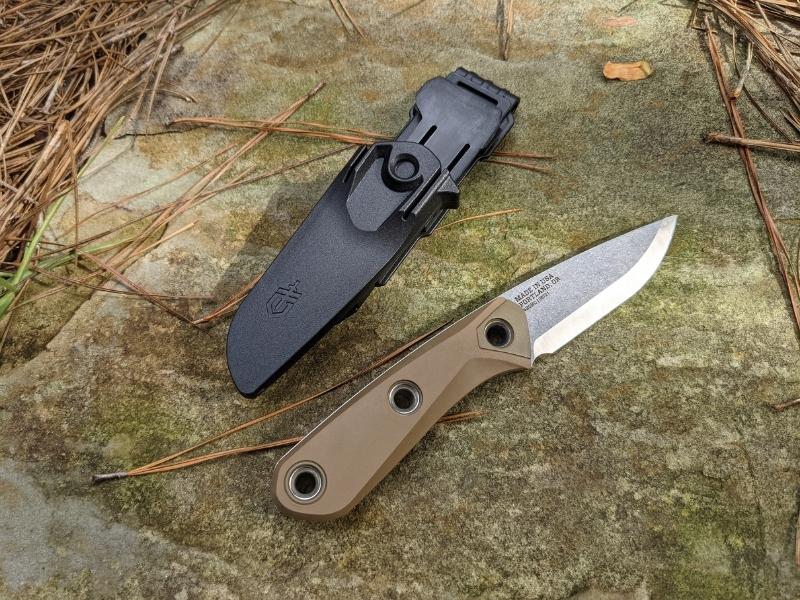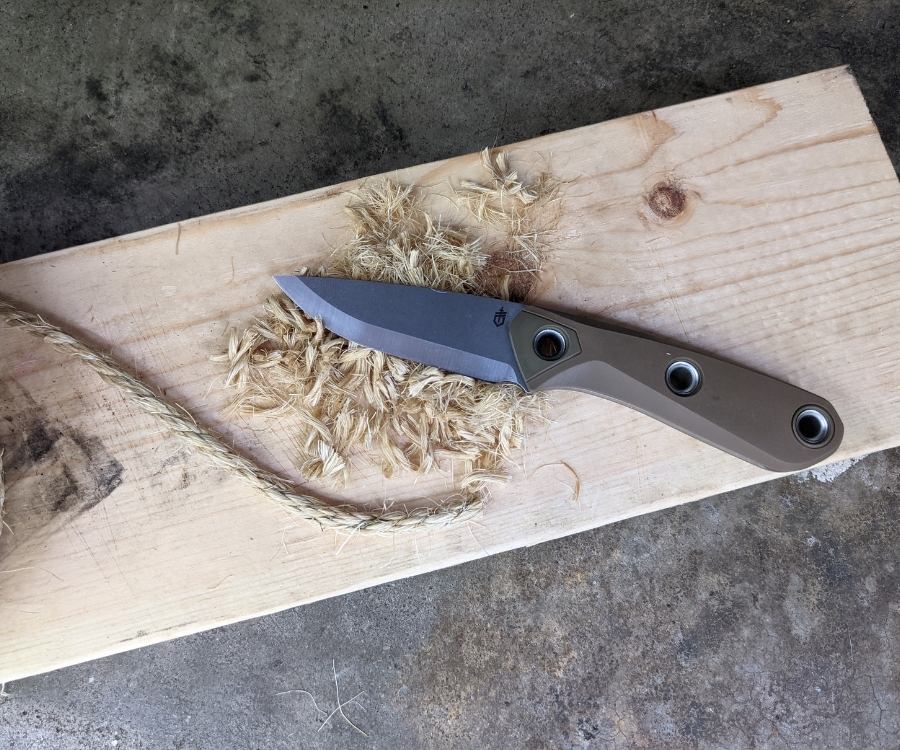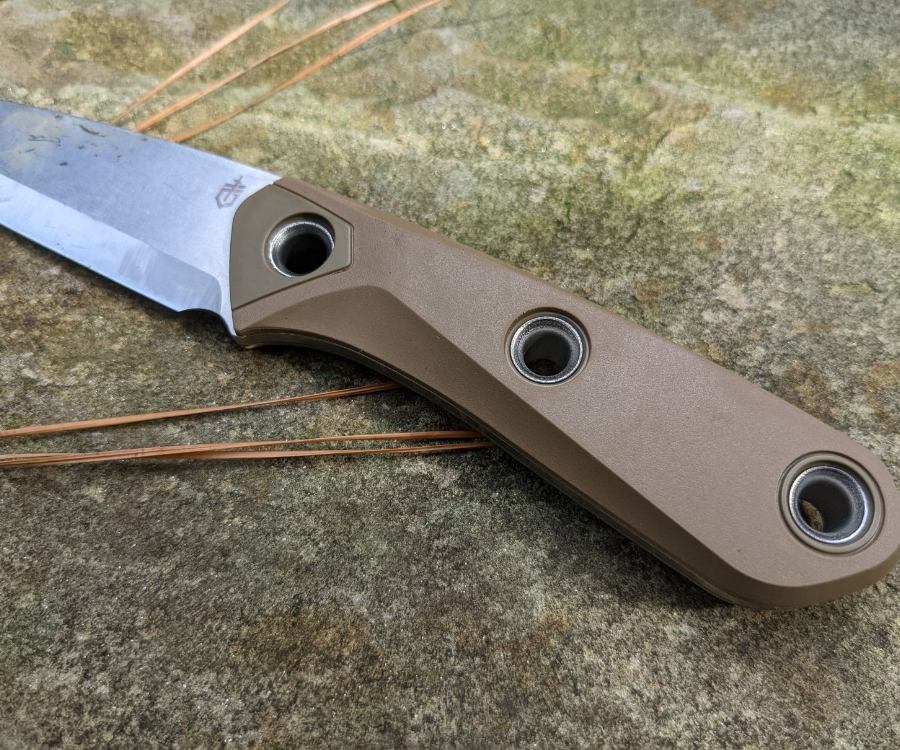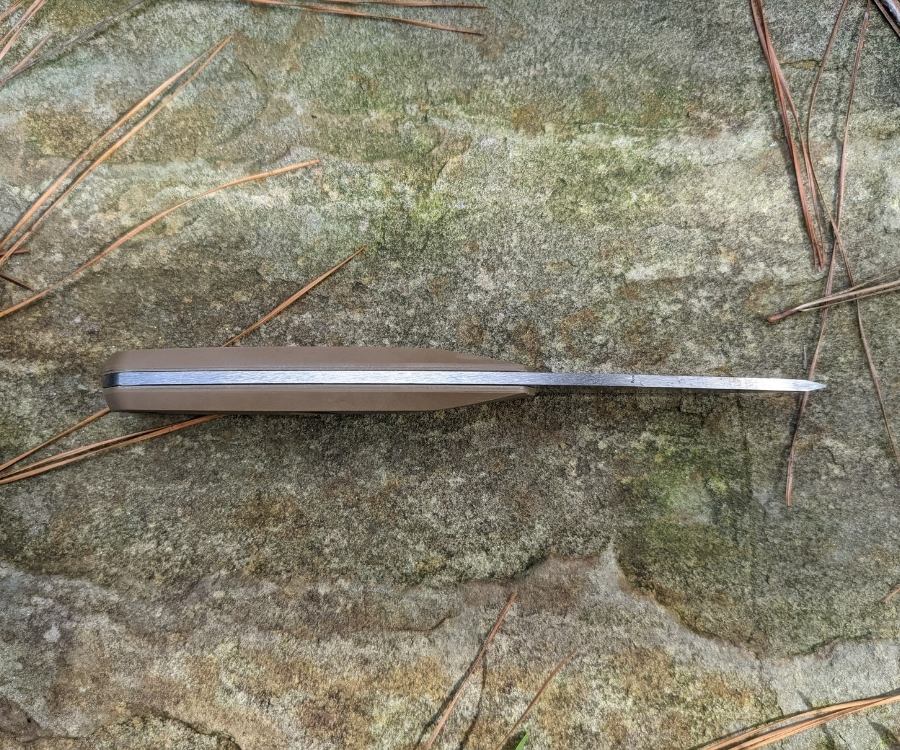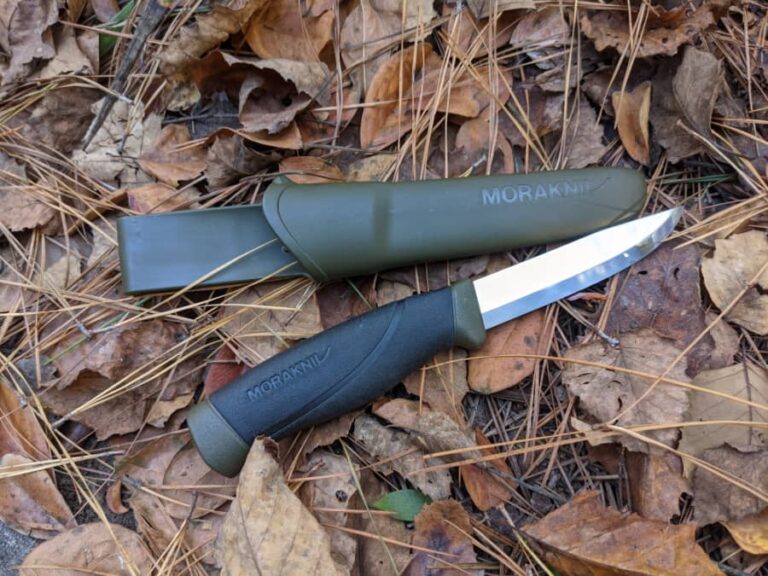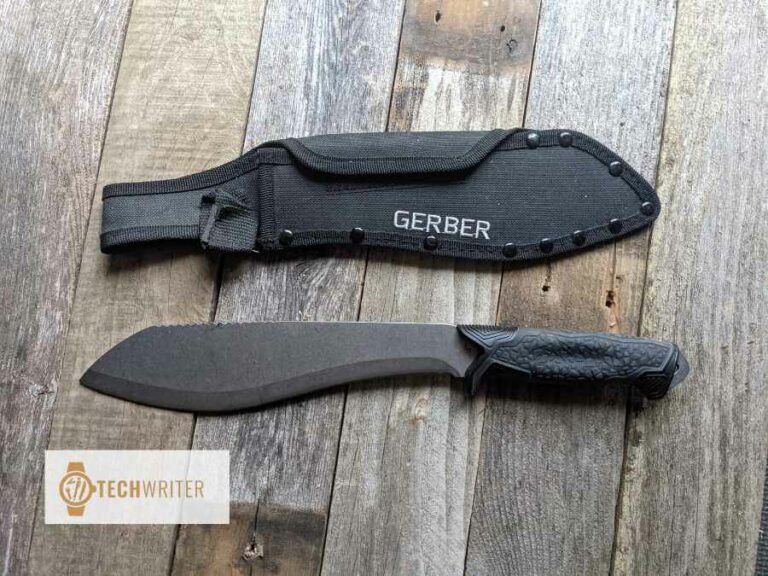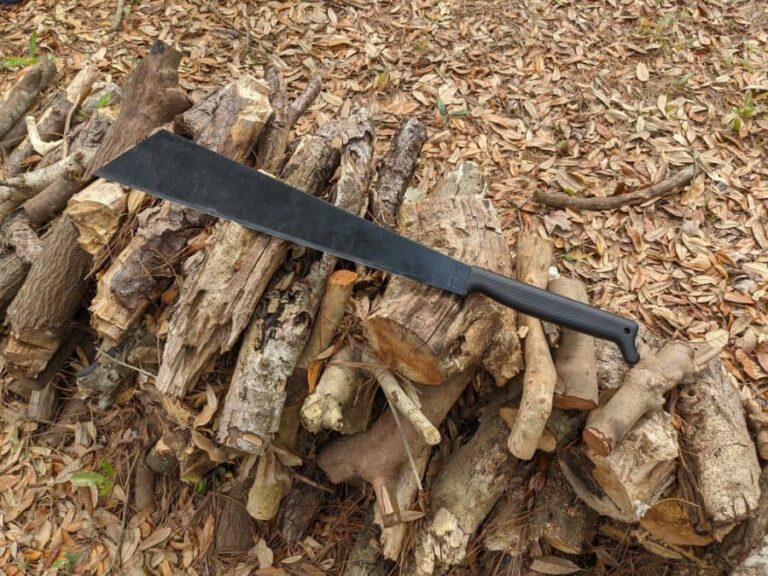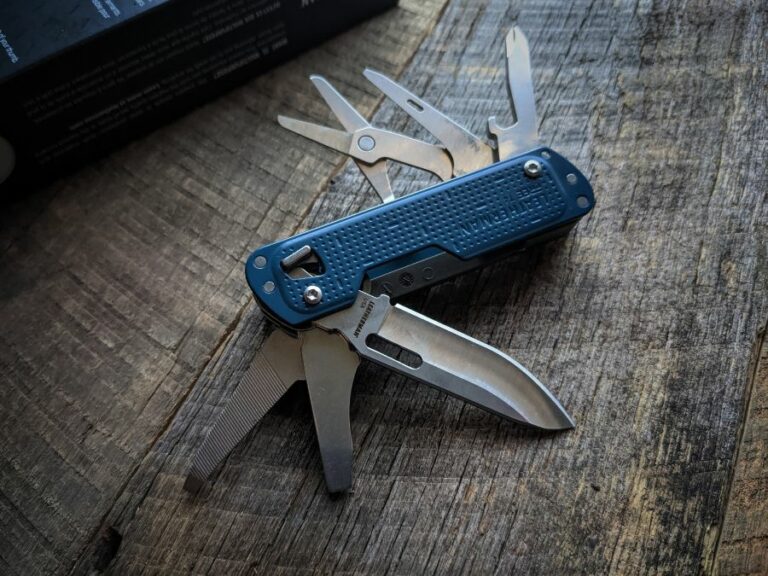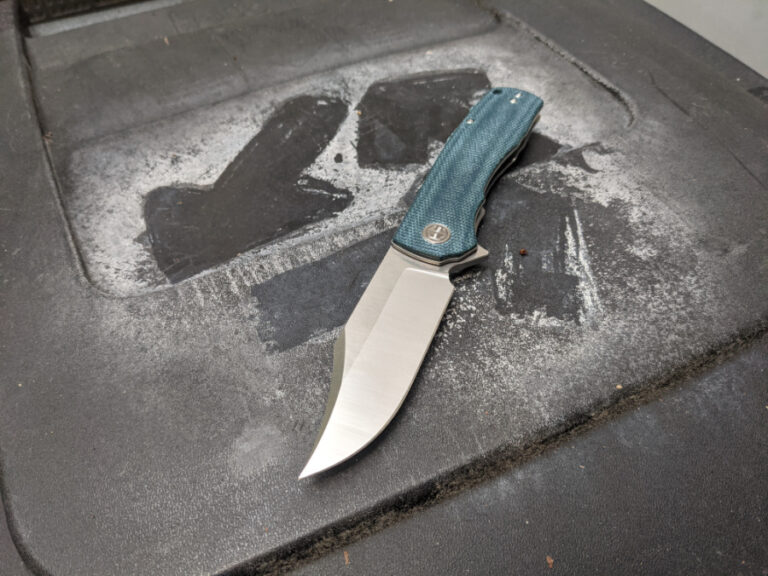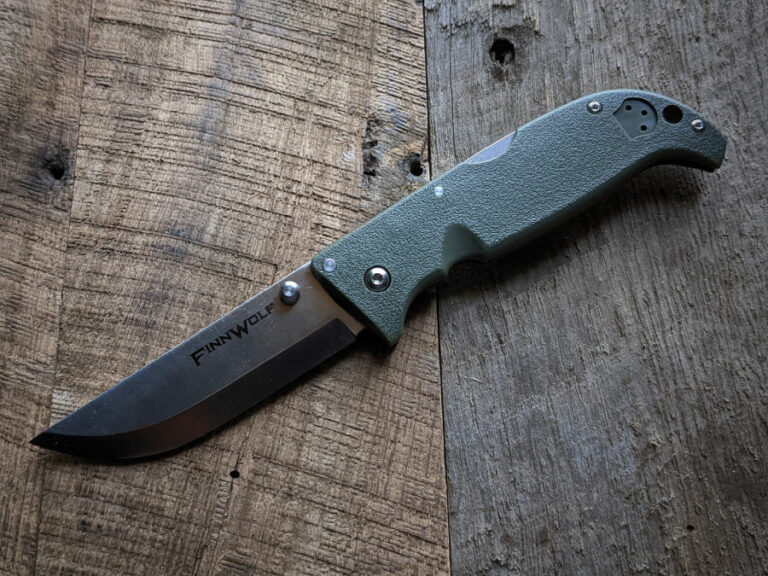Gerber Principle Knife Review
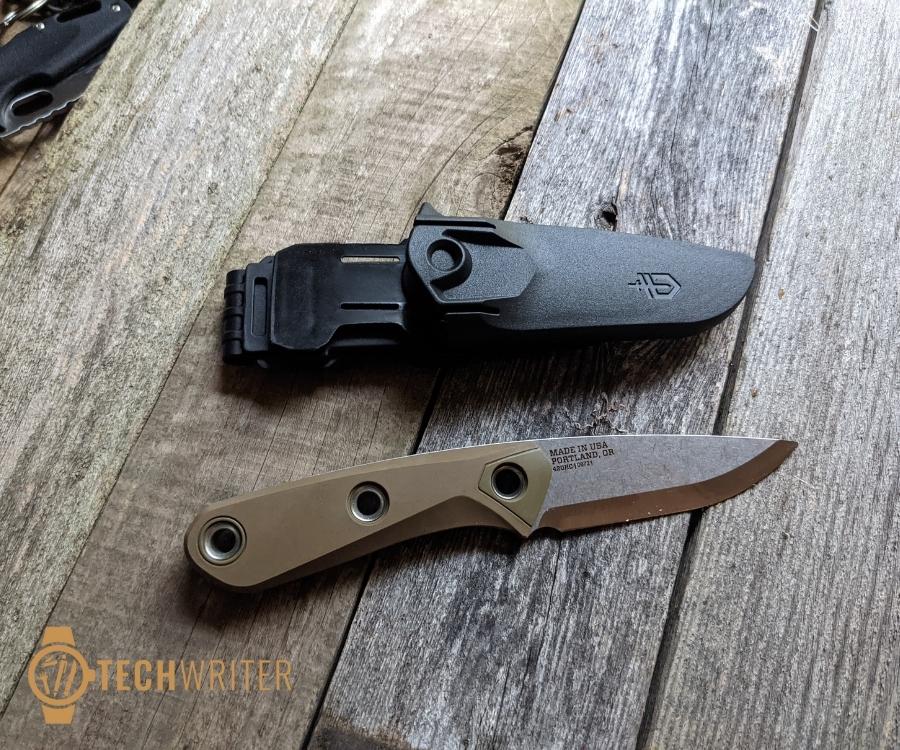
I’ve had the Gerber Principle sitting on the corner of my workbench for almost 7 months now. I opened it up, inspected it, and then just left it in the box sitting there. I’m not sure why I haven’t paid it any attention but every time I went out to the garage there it was, staring at me. It’s a good looking knife but after purchasing it on an impulse, I just didn’t feel like messing around with it. I am also not sure what made me pick it up again, but I’m glad I did. It’s a decent little bushcraft knife if you’re looking for something made in the USA.
The Gerber Principle comes in at $67 (as of today, prices change) and that price point puts it in some very competitive territory. For your money, you are getting a well thought out knife with a few perks and a ridiculous sheath. (I’ll go into the sheath more later.)
Gerber is one of those companies that internet ‘experts’ like to bash on and make fun of. Sometimes they have deserved it. (The Gerber Gator Machete comes to mind.) Other times they produce a great knife at a decent price point. I still have and use a Bear Grylls Survival knife that I purchased at Target well over 15 years ago and a Gerber FAST was my main EDC knife before I became too picky.
You have to give Gerber credit for trying to bring unique blades to the market and many times they are USA made. That’s what we have here, Gerber trying something a little different with a USA made bushcraft knife.
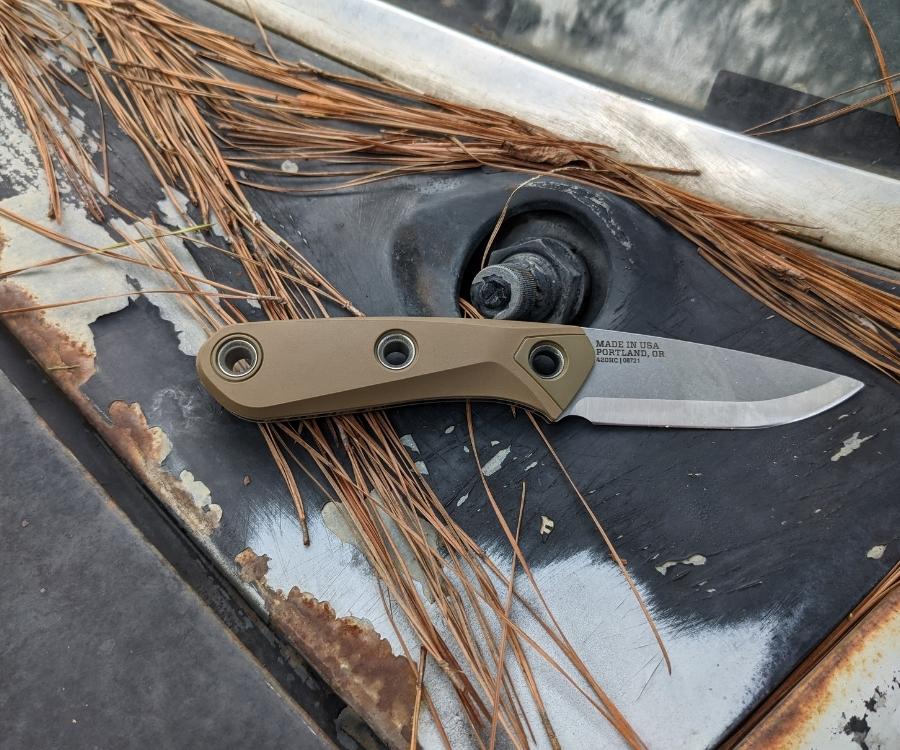
The Basics
First, let’s run down the basic specs. The Principle is a full-tang fixed blade that is targeted for bushcrafters and outdoorsmen. It has a square spine for striking a ferro rod, rubber scales for the handle with large lashing holes, and a scandi grind. Overall length is 7.5” with a blade length of 3.25”. The blade steel is 420HC. I could not find any more info on their treatment or the Rockwell hardness of this guy. (420HC steel can be done well or done poorly based on the heat treating.)
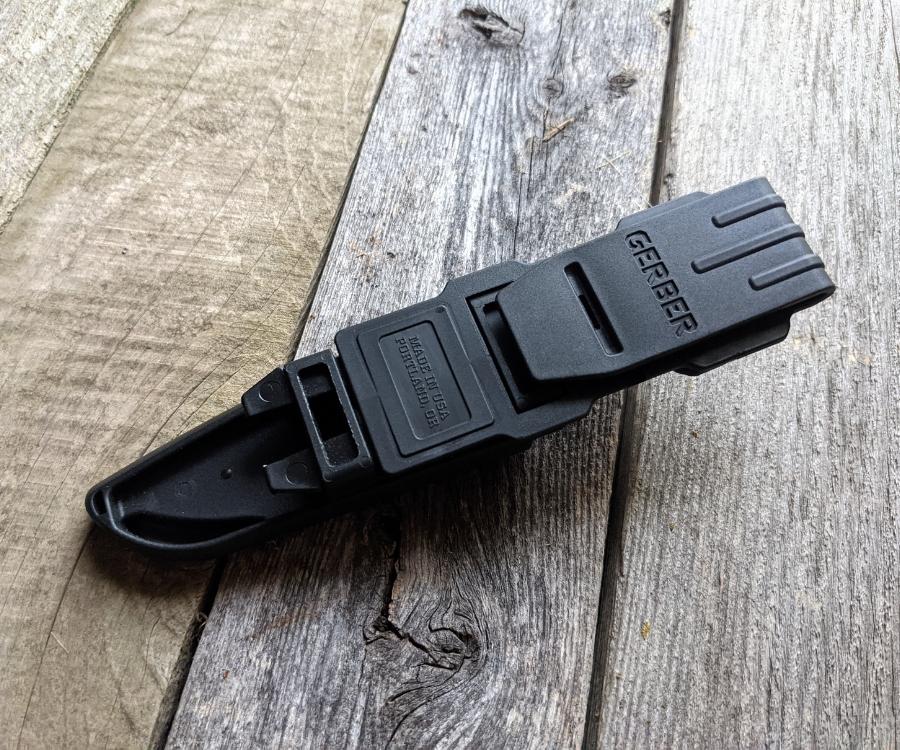
The Gerber Principle Sheath
The sheath almost ruined the whole knife for me. I really think Gerber should have gone with a simple kydex or nicer leather. It maybe would have fit the vibe better. What you get is a semi-tactical plastic sheath with multiple mounting options, most of which really don’t work that well. The knife does fit snugly inside, but mounting or wearing it is a mess. I was disappointed in the sheath to say the least. Depending on how you mount the sheath or what accessories you have configured, it can be finicky to get the knife out. You have to put your thumb on a release tab that you can’t get a great hold on because of how the rear mounting block is attached to the backside of the sheath. Good thing this is a camping/bushcraft knife because you’re not going to whip it out for any tactile situations with a sheath like that.
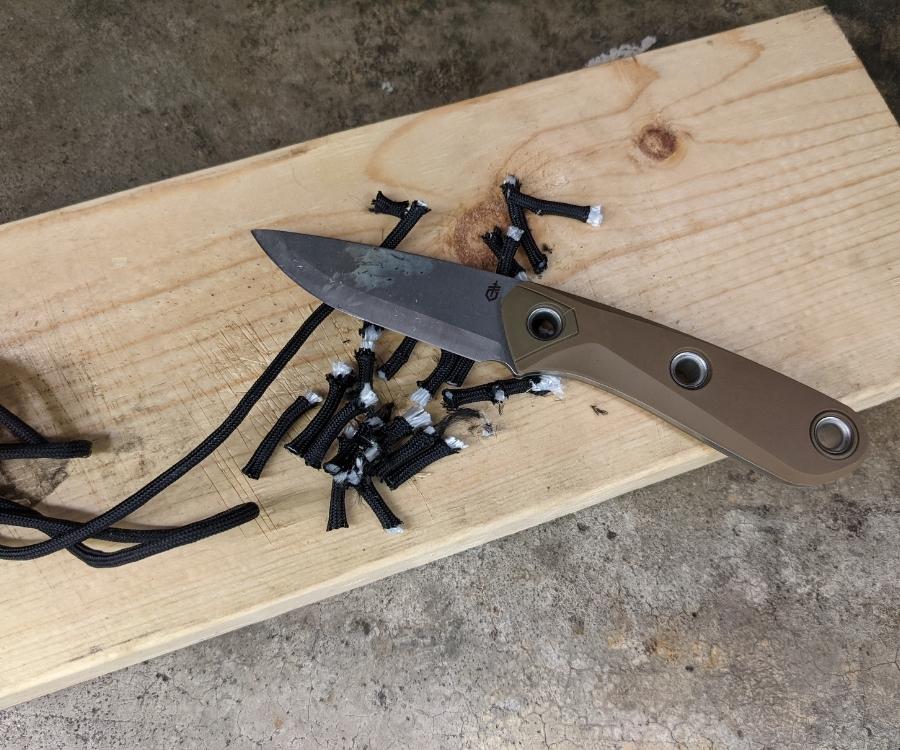
Real World Use of the Gerber Principle
I unfortunately didn’t have any upcoming camping trips or big adventures to put the Principle through the paces out in the wild, but I was able to use it pretty hard around the house and run a battery of tests on it. I kept it on my belt over a long weekend of landscaping and cleaning out a wooded section of our property. It is definitely a handy little knife and it even starts to cross over into the fixed blade EDC arena.
I typically will do very similar tasks with every knife that I review to give me a good level of comparison. These cutting tasks include paracord, heavy rope, lots of twine, rubber hose, and nylon straps. I start a fire, throw it at the ax target, and use it for everything from opening boxes to slicing fruit, etc. I am looking for stability in the hand and edge retention.
When it comes to comparing blade steel, I think one of the best done 420HC has to be the Buck 119. Buck must do an awesome heat treat on it because I’ve had a few under performers of 420HC, but not the Buck 119. I think Gerber, in this case, is right up there. The Principle was sharp out of the box, held an ok edge, but was very easy to sharpen. 420HC is not a very hard steel, but in the case of the Principle it’s not a survival knife and is meant for finer, more detailed tasks.
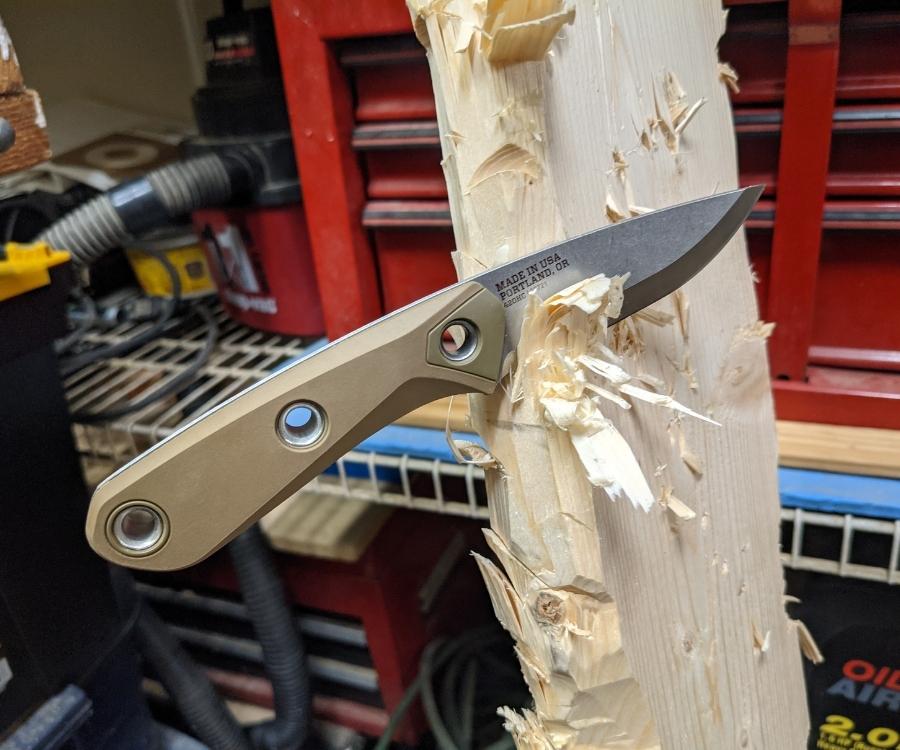
Writing knife reviews can be a chore sometimes. It’s very easy to say I like a knife and you will too, but putting words on paper to defend that statement is sometimes tedious. It’s also very easy to misunderstand what a knife is intended for if you head over to YouTube or other places on the internet. So often, knives and tools are put to a bigger or tougher test than what they are intended for. That’s the case here. There are a few poor reviews out there on the Principle, but I think if you look at what Gerber intended, you have a very solid bushcraft knife. And for the definition of “bushcraft knife” I am referring to Mors Kochanski’s definition from his original book, Bushcraft. He goes into detail over several paragraphs, but here are the highlights:
- 4” – 6” blade
- a blade tip close to the centerline of the handle
- large enough to baton with
- Carbon steel so it can be used with a fire striker
- Easily sharpened in the field
- Full tang construction
- Durable, water resistant handle
- It should bear your weight when driven into a tree at a right angle
If these are the traits we are going to use, then the Gerber Principle certainly checks off the boxes, except for one item. I read in several Amazon reviews about the handle scales being loose. I also found this to be true in extreme situations. It’s not that the scales are loose or come loose from the tang of the handle, it’s that the rubber molded grips actually flex under heavy strain. The movement is slight, and 98% of the time I would imagine it’s not noticeable.
I was surprised when I read the section about supporting your weight. Have you ever watched any of the Dutch Bushcraft Knife reviews on YouTube? They are always hammering knives into a tree and standing on them. I had no idea why or even the point until I saw this in the Bushcraft book. If you’ve never seen their channel, you have to watch the greatest knife review of all time by them, the Becker BK2.
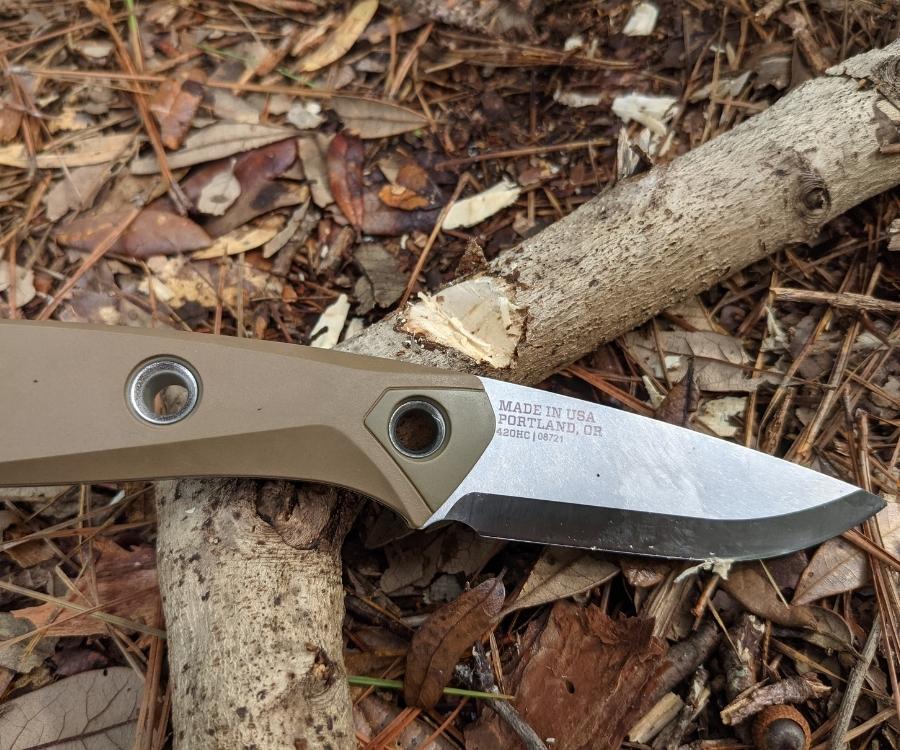
Thoughts on the Blade
The blade on the Principle measures just a tad over 3.25” so it’s on the shorter end of the spectrum for a true bushcraft knife. However, the Scandi Grind makes it a very useful knife. I know some purists would argue for a full flat grind, but for bushcraft and other outdoors type cutting, the Scandi is the way to go.
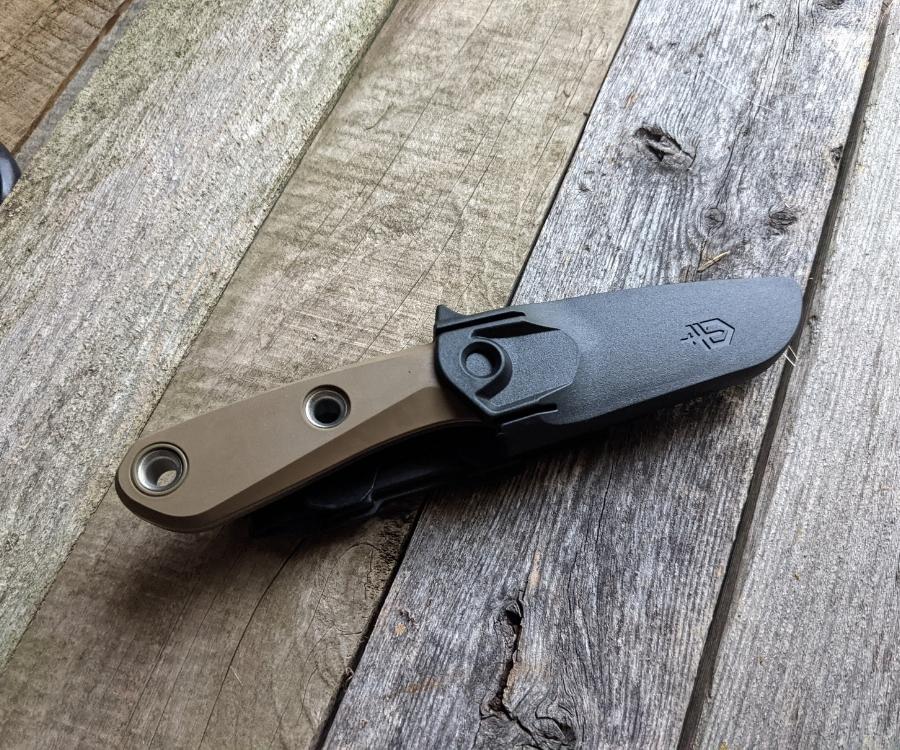
Should You Buy the Gerber Principle?
If you want a USA made knife, then this is one to consider. It is a decent all-arounder and does most things just fine.
The Gerber Principle’s problem is that it sits in the no-man’s land of knife prices. It’s over $50 but less than $100, on paper it has some nice specs but, in the real world, the cheaper 420HC blade steel lessens the overall appeal. On top of that, a ridiculous sheath design almost ruins the whole thing. And that kind of sums up the Gerber Principle: a lot of thought went into the knife, but it just misses the mark. The reason it ‘just misses the mark’ is because at the price point, the market is just very, very competitive. If you are looking for a basic bushcraft knife, the Condor Bushlore is $50 and comes with a beautiful leather sheath. For $10 more you can get an Ontario 8696 Bushcraft knife with slightly more durable steel. (The nylon sheath is just so-so.) Then you have a few Morakniv options like the Garburg or Bushcraft.
My final verdict, if you could grab the Gerber for $50-$55, I think it becomes an easy choice. If being USA made is your one and only deciding factor, then buy it.

Blair Witkowski is an avid watch nut, loves pocket knives and flashlights, and when he is not trying to be a good dad to his nine kids, you will find him running or posting pics on Instagram. Besides writing articles for Tech Writer EDC he is also the founder of Lowcountry Style & Living. In addition to writing, he is focused on improving his client’s websites for his other passion, Search Engine Optimization. His wife Jennifer and he live in coastal South Carolina.

